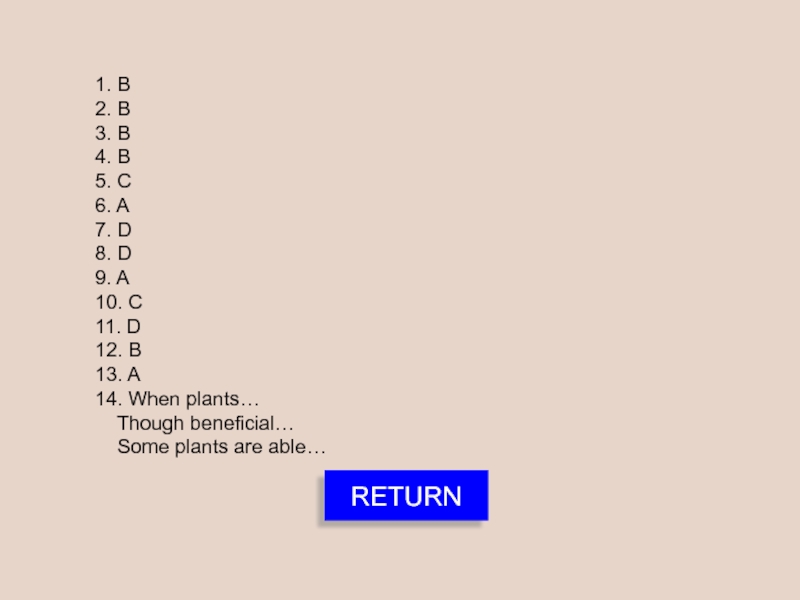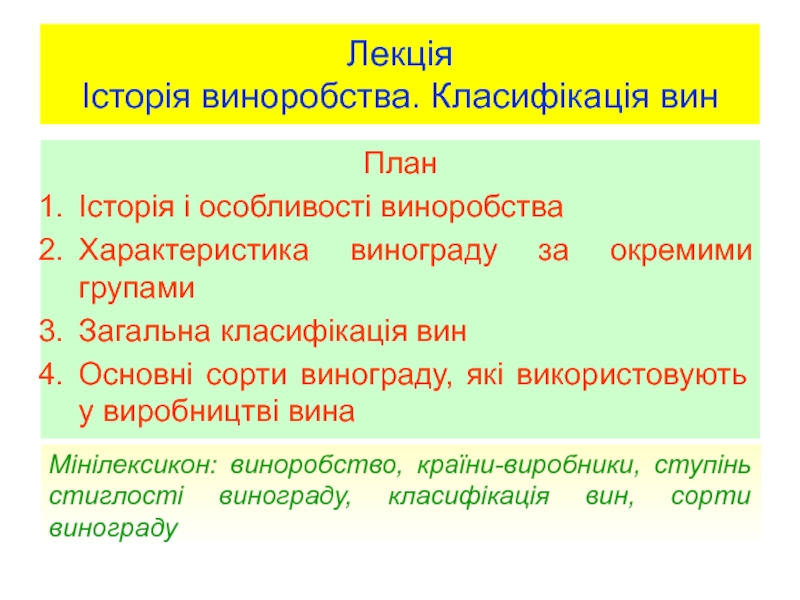- Главная
- Разное
- Дизайн
- Бизнес и предпринимательство
- Аналитика
- Образование
- Развлечения
- Красота и здоровье
- Финансы
- Государство
- Путешествия
- Спорт
- Недвижимость
- Армия
- Графика
- Культурология
- Еда и кулинария
- Лингвистика
- Английский язык
- Астрономия
- Алгебра
- Биология
- География
- Детские презентации
- Информатика
- История
- Литература
- Маркетинг
- Математика
- Медицина
- Менеджмент
- Музыка
- МХК
- Немецкий язык
- ОБЖ
- Обществознание
- Окружающий мир
- Педагогика
- Русский язык
- Технология
- Физика
- Философия
- Химия
- Шаблоны, картинки для презентаций
- Экология
- Экономика
- Юриспруденция
Test TPO 5. Minerals and plants. (Section 1) презентация
Содержание
- 1. Test TPO 5. Minerals and plants. (Section 1)
- 2. Set the timer to “20:00”
- 3. Question 1 of 14
- 4. Question 2 of
- 5. Question 3
- 6. Question 4
- 7. Question 5
- 8. Question 6
- 9. Question 7
- 10. Question 8
- 11. Question 9
- 12. Question 10
- 13. Question 11
- 14. Question 12
- 15. Question 13
- 16. Question 14
- 18. Congratulations! You have completed this practice test.
- 19. RETURN 1. B 2. B 3. B
- 20. Are you sure you want to exit
- 21. Your answers will be saved with the
- 22. OK When your computer asks you if
- 23. OK When your computer asks you if
Слайд 2
Set the timer to “20:00” before doing the test.
If you
Слайд 3
Question 1 of 14
According to paragraph 1, what is true of
They absorb micronutrients unusually well.
They require far less calcium than most plants do
They are able to absorb nitrogen in its elemental state.
They are typically crops raised for food
Paragraph 1 is marked with ◆
Слайд 4
Question 2 of 14
The word 【exhibit】 in the passage is closest
fight off
show
cause
spread
Слайд 5
Question 3 of 14
According to paragraph 2, which of the following
Chlorosis on leaves
Change in leaf pigmentation to a dark shade of green
Short, stunted appearance of stems
Reddish pigmentation on the leaves or stem
Paragraph 2 is marked with ◆
Слайд 6
Question 4 of 14
According to paragraph 2, a symptom of iron
deep red discoloration between the veins
white or yellow tissue between the veins
dead spots between the veins
characteristic dark green veins
Paragraph 2 is marked with ◆
Слайд 7
Question 5 of 14
The word 【facilitates】 in the passage is closest
slows down
affects
makes easier
focuses on
Слайд 8
Question 6 of 14
According to paragraph 3, what is the advantage
It allows researchers to control what nutrients a plant receives.
It allows researchers to observe the growth of a large number of plants simultaneously.
It is possible to directly observe the roots of plants.
It is unnecessary to keep misting plants with nutrient solutions.
Paragraph 3 is marked with ◆
Слайд 9
Question 7 of 14
The word 【suspended】 in the passage is closest
grown
protected
spread out
hung
Слайд 10
Question 8 of 14
Why does the author mention 【herbs】, 【shrubs】, and
To provide examples of plant types that cannot tolerate high levels of harmful minerals
To show why so many plants are hyperaccumulators
To help explain why hyperaccumulators can be found in so many different places
To emphasize that hyperaccumulators occur in a wide range of plant types
Слайд 11
Question 9 of 14
The word 【afford】 in the passage is closest
offer
prevent
increase
remove
Слайд 12
Question 10 of 14
Which of the sentences below best expresses the
Before considering phytoremediation, hyperaccumulating species of plants local to the target area must be identified
The investigation begins with an evaluation of toxic sites in the target area to determine the extent of contamination.
The first step in phytoremediation is the planting of hyperaccumulating plants in the area to be cleaned up.
Mines and irrigation ponds can be kept from becoming contaminated by planting hyperaccumulating species in targeted areas.
Слайд 13
Question 11 of 14
It can be inferred from paragraph 6 that
does not allow for the use of the removed minerals for industrial purposes
can be faster to implement
is equally friendly to the environment
is less suitable for soils that need to be used within a short period of time
Paragraph 6 is marked with ◆
Слайд 14
Question 12 of 14
Why does the author mention 【Indian mustard】?
To warn
To help illustrate the potential of phytoremediation
To show that hyperaccumulating plants grow in many regions of the world
To explain how zinc contamination can be reduced
Слайд 15
Question 13 of 14
Look at the four squares [■]that indicate where
Certain minerals are more likely to be accumulated in large quantities than others.
Where would the sentence best fit?
■ 1
■ 2
■ 3
■ 4
Слайд 16
Question 14 of 14
Directions: An introductory sentence for a brief summary
Answer Choices
To review passage. Click View Text
Plants need to absorb certain minerals from the soil in adequate quantities for normal growth and development.
●
●
●
Some plants can tolerate comparatively low levels of certain minerals, but such plants are of little use for recycling nutrients back into depleted soils.
Mineral deficiencies in many plants can be cured by misting their roots with a nutrient solution or by transferring the plants to a soilless nutrient solution.
Because high concentrations of sodium chloride and other salts limit growth in most plants, much research has been done in an effort to develop salt-tolerant agricultural crops.
When plants do not absorb sufficient amounts of essential minerals, characteristic abnormalities result.
Though beneficial in lower levels, high levels of salts, other minerals, and heavy metals can be harmful to plants.
Some plants are able to accumulate extremely high levels of certain minerals and thus can be used to clean up soils contaminated with toxic levels of these minerals.
Слайд 18Congratulations!
You have completed this practice test.
Save / exit the test
Review
Obtain answer keys
Слайд 19RETURN
1. B
2. B
3. B
4. B
5. C
6. A
7. D
8. D
9. A
10. C
11.
12. B
13. A
14. When plants…
Though beneficial…
Some plants are able…
Слайд 20Are you sure you want to exit the test?
YES
NO
Exit the test.
Return to the last question and resume doing the test.
Слайд 21Your answers will be saved with the file.
Your answers will
Do you want to save your answers?
YES
NO


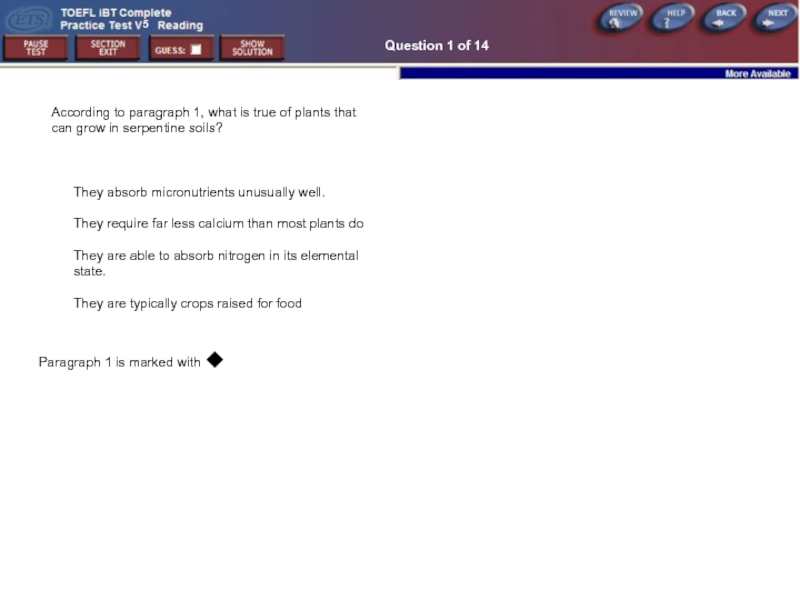


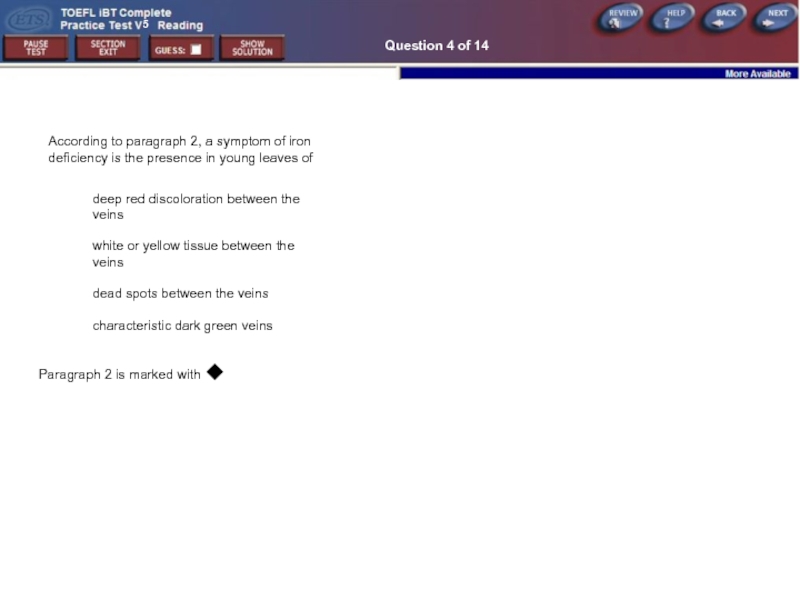

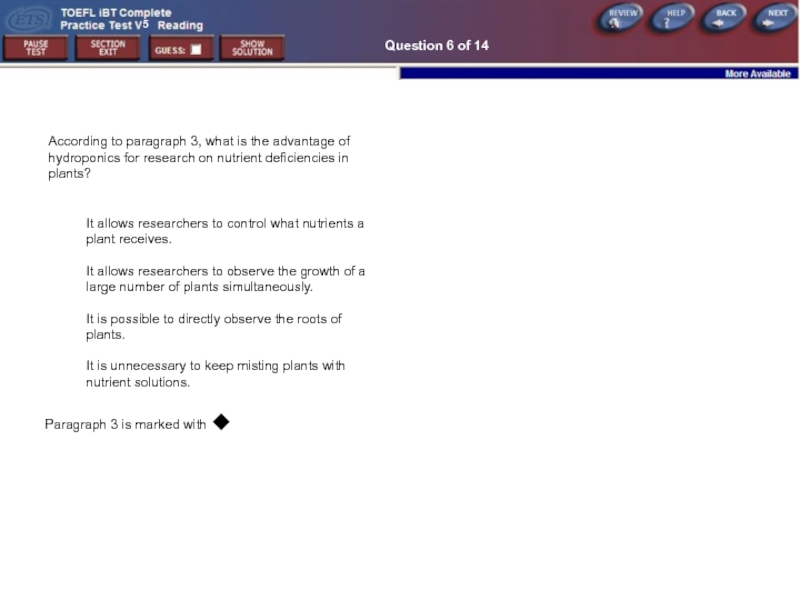

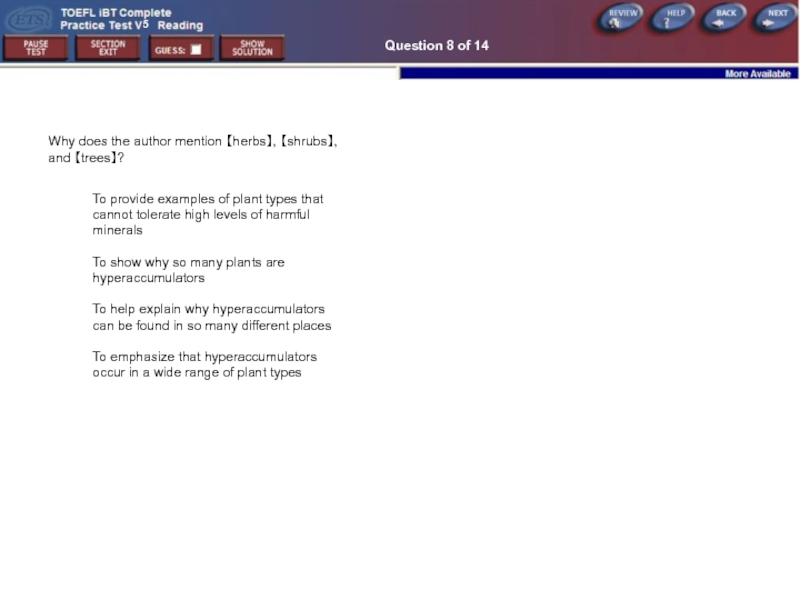

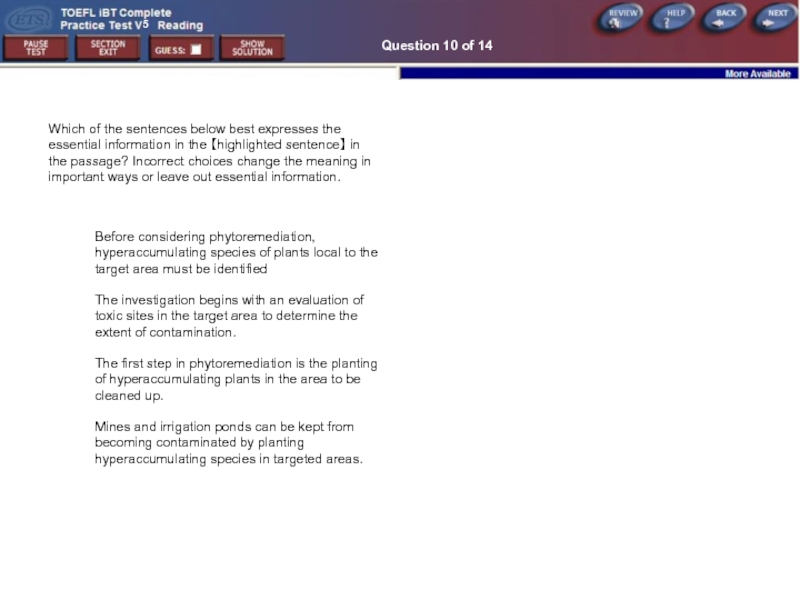
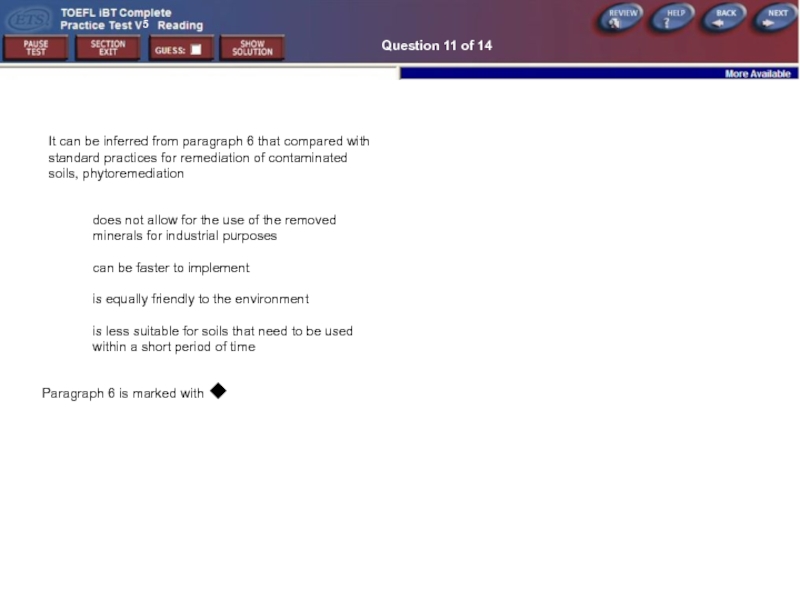
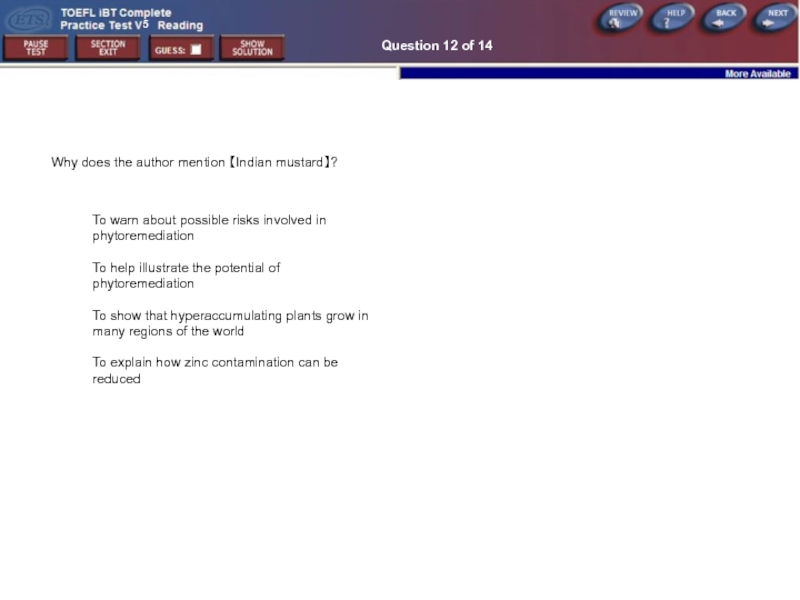
![Question 13 of 14Look at the four squares [■]that indicate where the following sentence could](/img/tmb/4/303383/22bd9e75bf7d0eedf3a1de5a00c0e432-800x.jpg)



